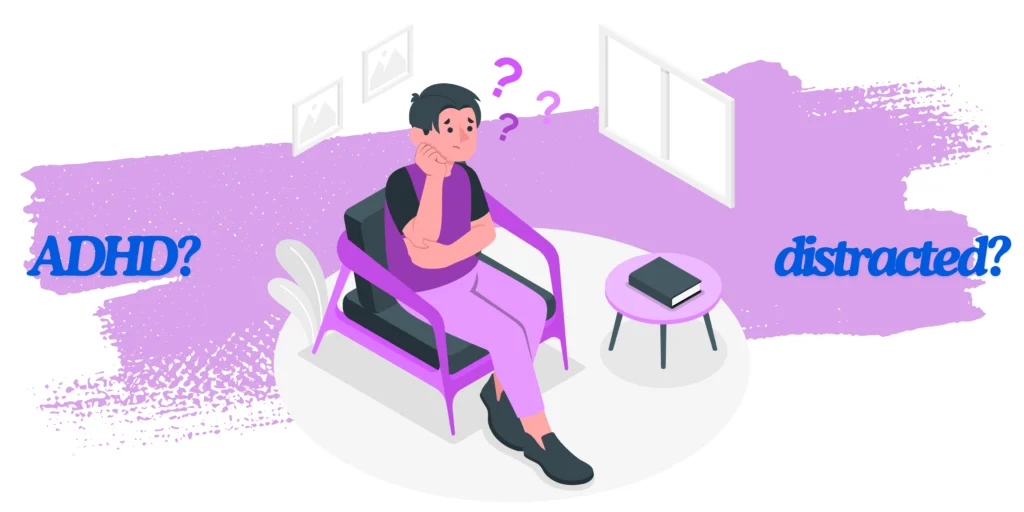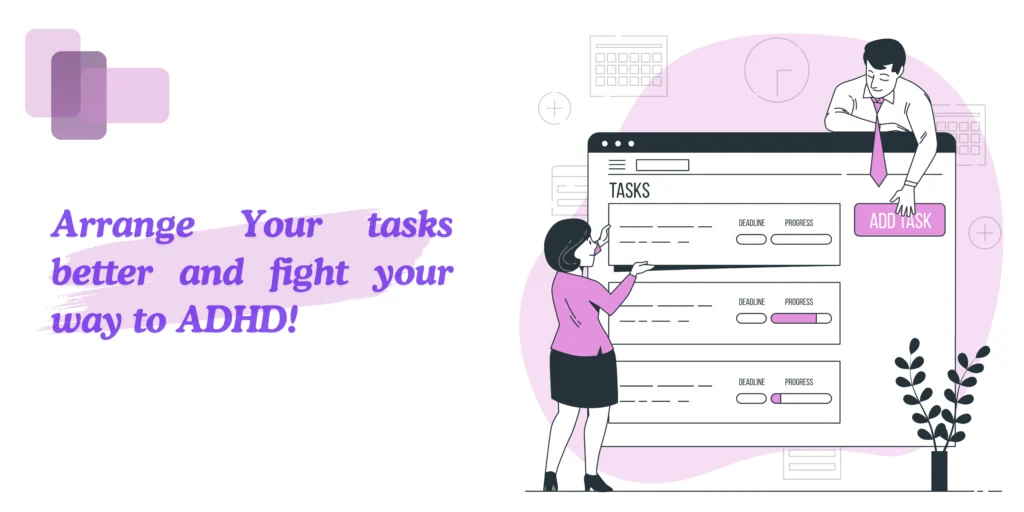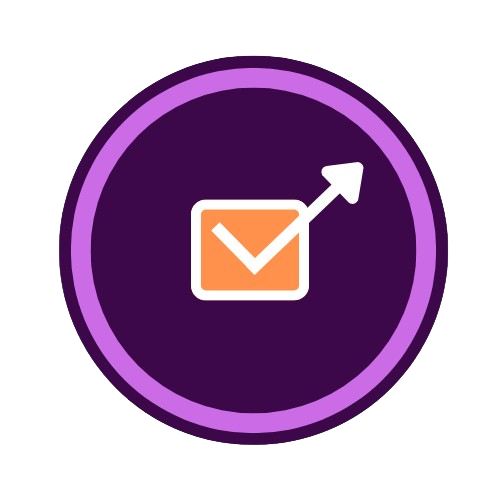Have you ever found yourself staring at a mountain of tasks, feeling overwhelmed and unsure where to start? Or maybe you’ve experienced the frustration of sitting down to work, only to find your mind wandering. If this sounds familiar, you’re not alone. For those of us with Attention Deficit Hyperactivity Disorder (ADHD), staying focused and managing time effectively can feel like a battle.
But there’s a simple yet powerful technique that could revolutionize the way you work and study. The Pomodoro Technique, a time management method that will work as a game changer for you.
let’s take a moment to understand what ADHD is and why it makes focusing so challenging.
What is ADHD?
Attention Deficit Hyperactivity Disorder, or ADHD, is a neurodevelopmental disorder that affects both children and adults. It’s marked by ongoing trouble with paying attention, staying still, and controlling impulses, which makes daily life and development harder.
ADHD is more than just being hyperactive it comes in three types:
- Predominantly Inattentive Type
- Predominantly Hyperactive-Impulsive Type
- Combined Type
So, whether you’re the person who can’t sit still or the daydreamer who gets lost in thought, ADHD can manifest in different ways.
The ADHD and Pomodoro Timer
Here’s where things get interesting. The ADHD brain is wired differently when it comes to attention and focus. Imagine your brain as a busy traffic intersection without a traffic light. Thoughts, ideas, and external stimuli all travel around, competing for attention. For someone with ADHD, it’s like trying to direct traffic in this chaos, exhausting, and often ineffective.
This unique brain wiring affects our ability to sustain attention on tasks, especially those we find boring or challenging, manage time effectively, prioritize and organize tasks, filter out distractions, and regulate our emotions and motivation. As a result, people with ADHD often struggle with procrastination, missed deadlines, and feeling overwhelmed. It’s not that you don’t want to focus or complete tasks, your brain just makes it incredibly difficult to do so consistently.
The Need for Structured Breaks and Focus Tools for ADHD
These challenges mentioned above, make it clear that people with ADHD need strategies that provide structure and help manage attention. This is where the concept of structured breaks comes in. Regular breaks can help recharge your mental batteries and prevent burnout. But for those with ADHD, unstructured breaks can easily turn into hours of procrastination.
That’s why tools that combine focused work periods with structured breaks can be so beneficial. Like the Pomodoro technique, this can be one of the most beneficial methods to track your time and get a good balance between breaks and focus time. There are many Pomodoro timer tools and Pomotodo is the best with variations with the timer, for example, a normal Pomotodo timer as well as a minimalist Pomodoro timer.

A Quick Glance on The Pomodoro Technique
The Pomodoro Technique is a time management method that uses a timer to break work into intervals, traditionally 25 minutes in length, separated by short breaks. These intervals are known as “Pomodoros,” named after the tomato-shaped kitchen timer
Here’s a basic breakdown of how it works:
- Choose a task to work on
- Set a timer for 25 minutes
- Work on the task until the timer rings
- Take a short 5-minute break
- After 2nd Pomodoro, take a longer break (10-15 minutes)
Simple, right? But for those of us with ADHD, this simple structure can be incredibly powerful. And with a to-do list to follow, it would be the best combination to check off your tasks! if you are looking for an easy yet best To-Do list Chrome extension you can consider Pomotodo’s To-do list extension
Why the Pomodoro Technique is Great for ADHD
Provides structure and routine
One of the biggest challenges for people with ADHD is creating and sticking to a routine. The Pomodoro Technique provides a clear, predictable structure for your work day. Instead of facing an intimidating eight-hour workday, you’re breaking it down into manageable 25-minute chunks.
This structure helps in several ways:
- It makes starting tasks easier. Instead of committing to working on something for hours.
- It creates a sense of urgency. Knowing you only have 25 minutes can help you focus and avoid perfectionism.
- It provides natural stopping points.
Reduces overwhelmed feeling
The Pomodoro Technique helps break big projects into smaller, more manageable pieces. Instead of procrastinating about the project.
This approach can significantly reduce feelings of overwhelm and make large tasks feel more approachable. It also provides frequent opportunities to celebrate small wins, which can be incredibly motivating.
Encourages Breaks to Recharge
One of the core principles of the Pomodoro Technique is taking regular breaks. This is crucial for people with ADHD, who often struggle with sustained attention. The scheduled breaks provide opportunities to rest your brain and avoid mental fatigue, move your body which can help with restlessness and improve focus when you return to work, and minimize distractions things like checking your phone, rather than letting them interrupt your work constantly.
These breaks can help prevent burnout and make it easier to maintain focus during your work sessions.

How to Adapt the Pomodoro Technique for ADHD
While the classic Pomodoro Technique is a great starting point, people with ADHD may benefit from some adaptations. Here are a few suggestions:
Adjust the timing: While 25 minutes is the traditional length for a Pomodoro, you might find that shorter or longer periods work better for you. Experiment with different lengths to find your sweet spot.
Use visual timers: Many people with ADHD find visual representations of time passing helpful. Try using a timer app that shows time ticking away graphically.
Plan your Pomodoros: At the start of each day, make a list of tasks by using a to-do list app and estimate how many Pomodoros each will take. This can help with time management and prioritization.
Be flexible: If you’re in a state of flow when the timer goes off, it’s okay to finish your thoughts before taking a break. The technique should work for you, not the other way around.
Use the breaks wisely: Plan what you’ll do during your breaks to avoid getting distracted and extending them too long. Short exercises, stretches, or mindfulness activities can be great options.
PomoTodo App for ADHD
One of the best Pomodoro timer apps available that is well-suited for people with ADHD is PomoTodo. This app combines the Pomodoro Technique with to-do list functionality, making it easier to note and track your tasks.
Some features that make PomoTodo great for ADHD:
- Visual timer with moody backgrounds and also with a minimalist theme.
- Ability to categorize tasks and track productivity using the to-do list.
- Reminders to start your next Pomodoro with alarms.
- It has a playlist that includes lo-fi concentrating music
Tips for Getting Started
Starting any new habit can be fun, here are some tips to help you get started with the Pomodoro Technique:
Start Small
Don’t try to overhaul your entire work style overnight. Instead:
- Begin with a single task and work for one Pomodoro session.
- Gradually build up as you become more comfortable with the technique.
- Don’t worry if you get distracted during your first few attempts. It takes practice to build focus.
Track Your Progress
Tracking your progress can be incredibly motivating.
Try:
- Use a to-do list app to record how many Pomodoro sessions and tasks you complete each day.
- Celebrate small wins, like completing your first full Pomodoro or finishing a task in fewer Pomodoros.
- Reflect on what worked well and what didn’t. Maybe certain times of day are better for focused work.
Create a Helpful Work Environment
Set yourself up for success by:
- Clear your workspace of visible distractions before starting a Pomodoro.
- Use noise-cancelling headphones or background music if it helps you focus.
- Letting others know you’re doing focused work to minimize interruptions.
Conclusion
Living with ADHD can make focusing and managing time feel like a constant struggle. But with tools like the Pomodoro Technique, it’s possible to work with your brain instead of against it. By providing structure, reducing overwhelm, and encouraging regular breaks, this method can be a game-changer for productivity and focus.
Remember, the Pomodoro Technique isn’t a magic solution – it’s a tool. Like any tool, it may take some practice and adaptation to use effectively. But for many people with ADHD, it’s proven to be an invaluable aid in conquering tasks, managing time, and achieving goals.

